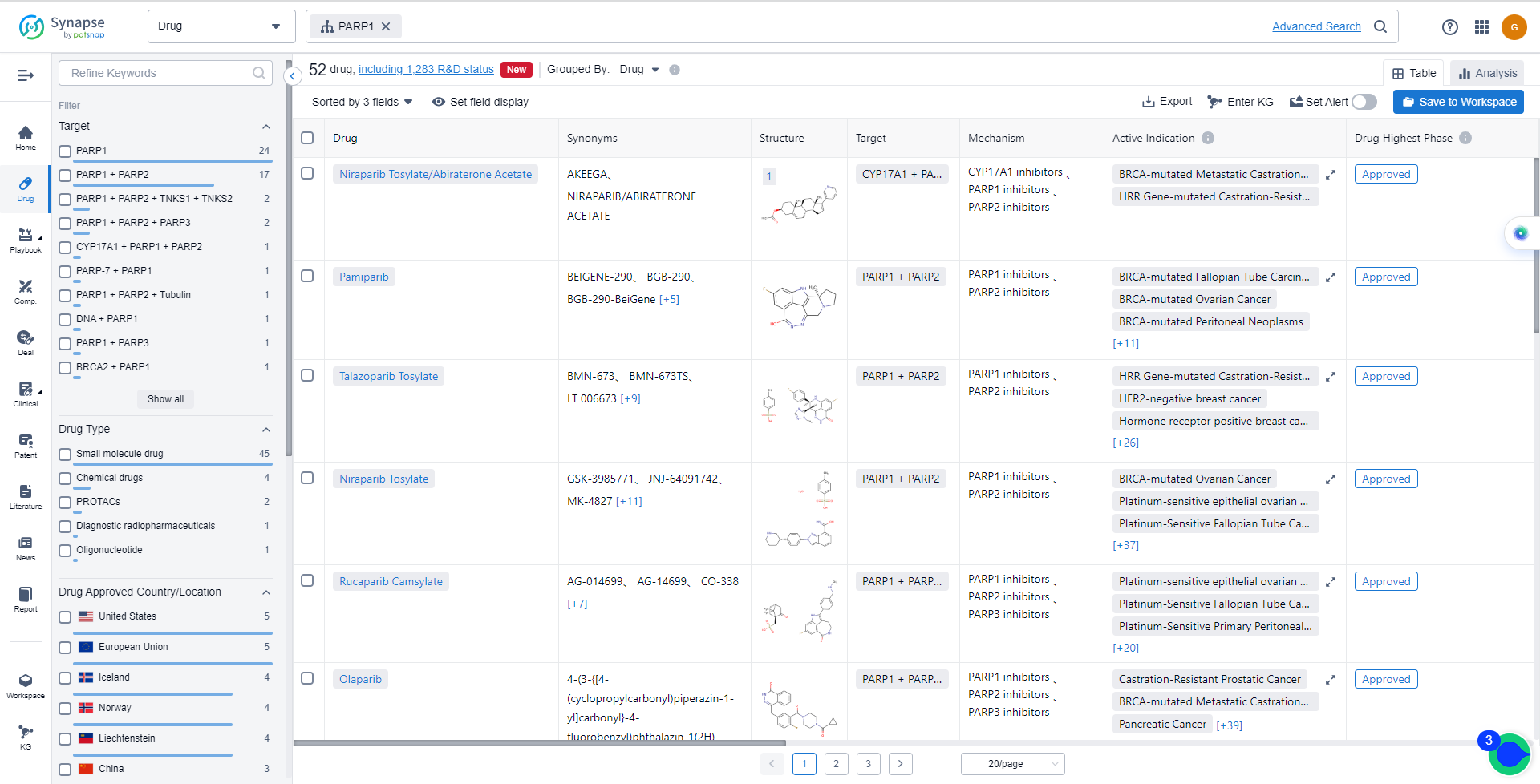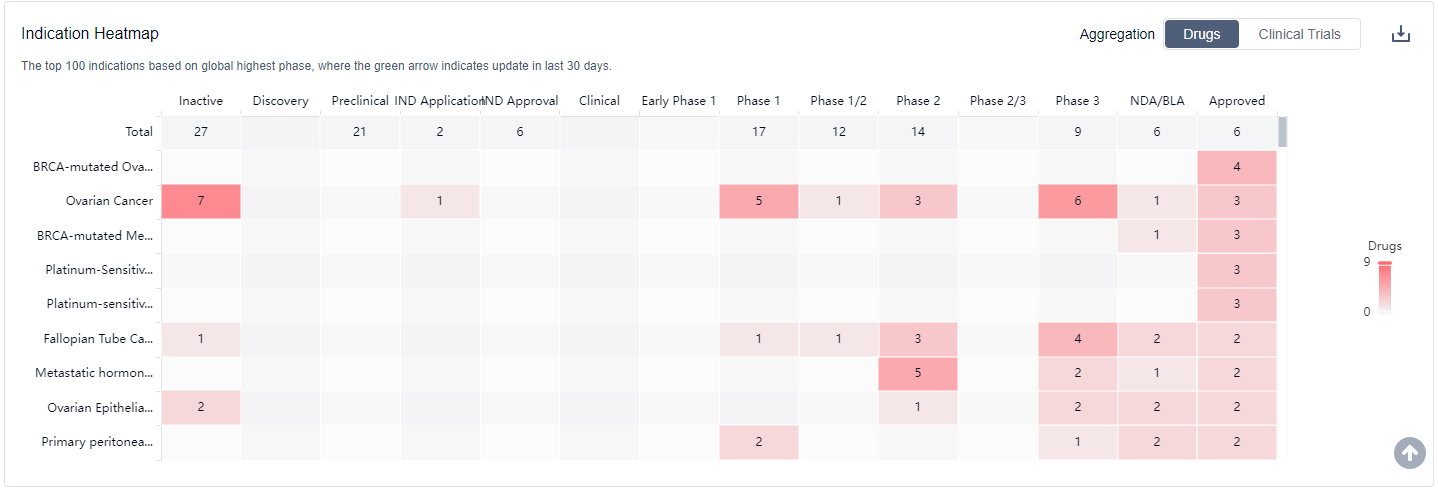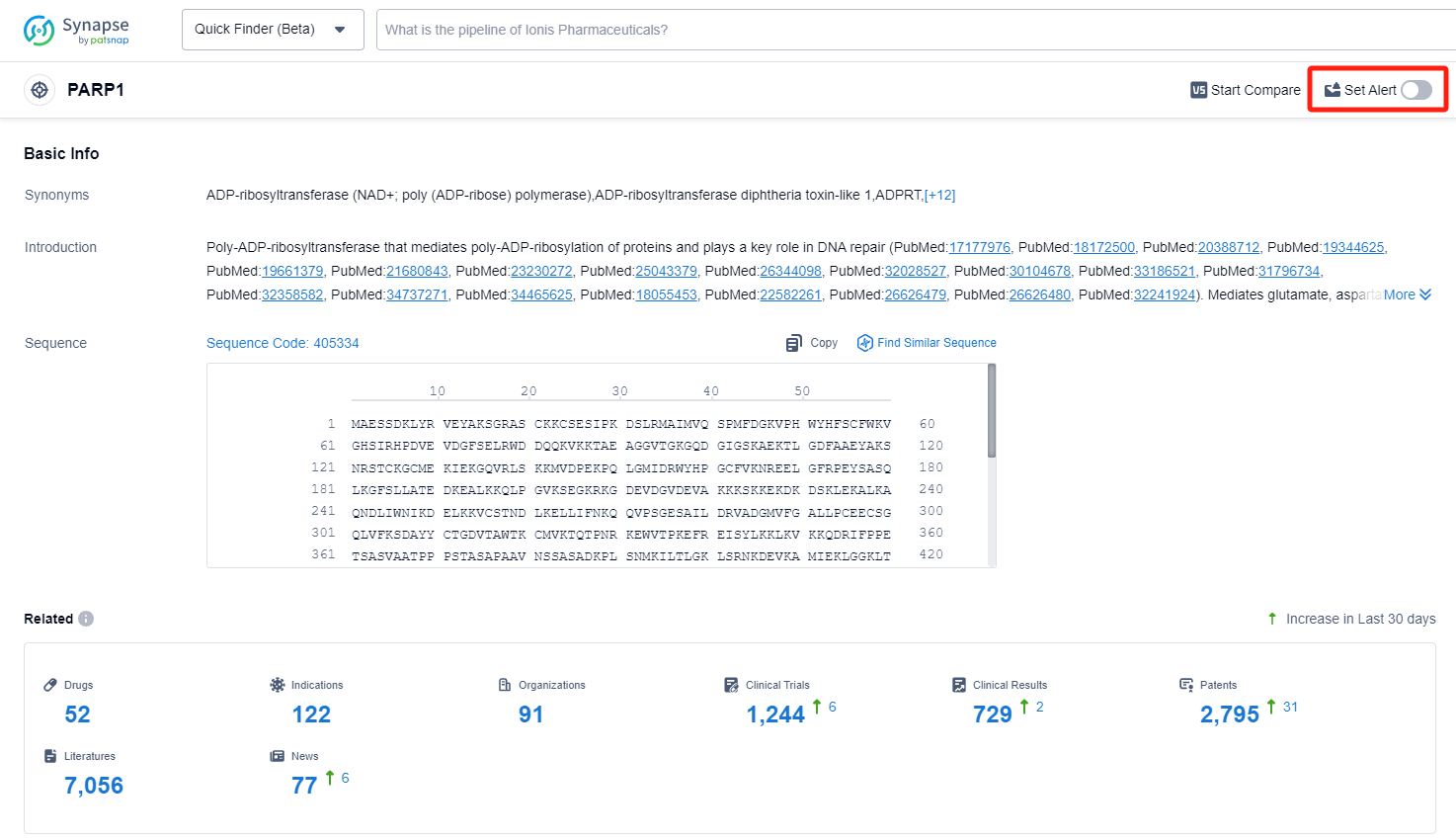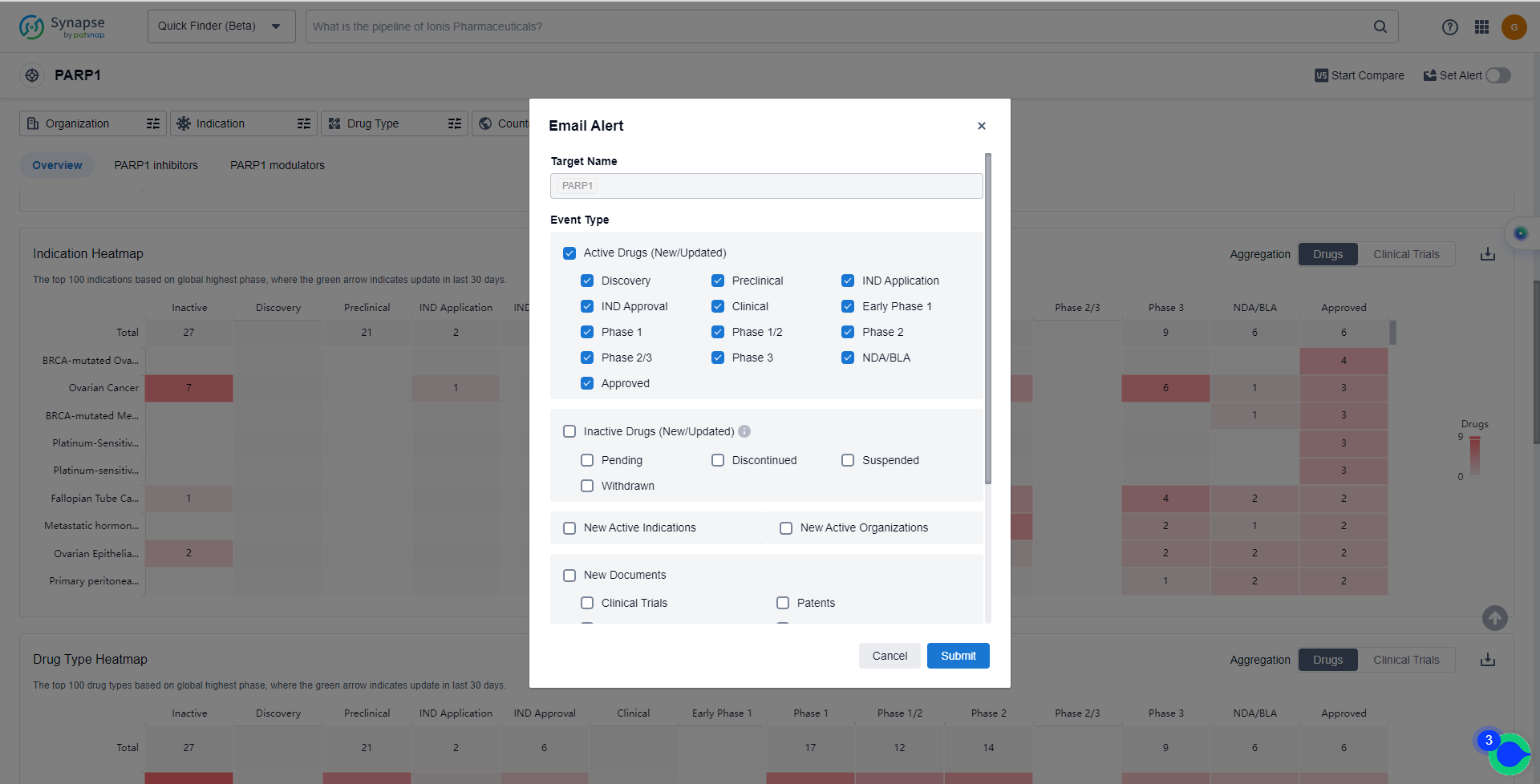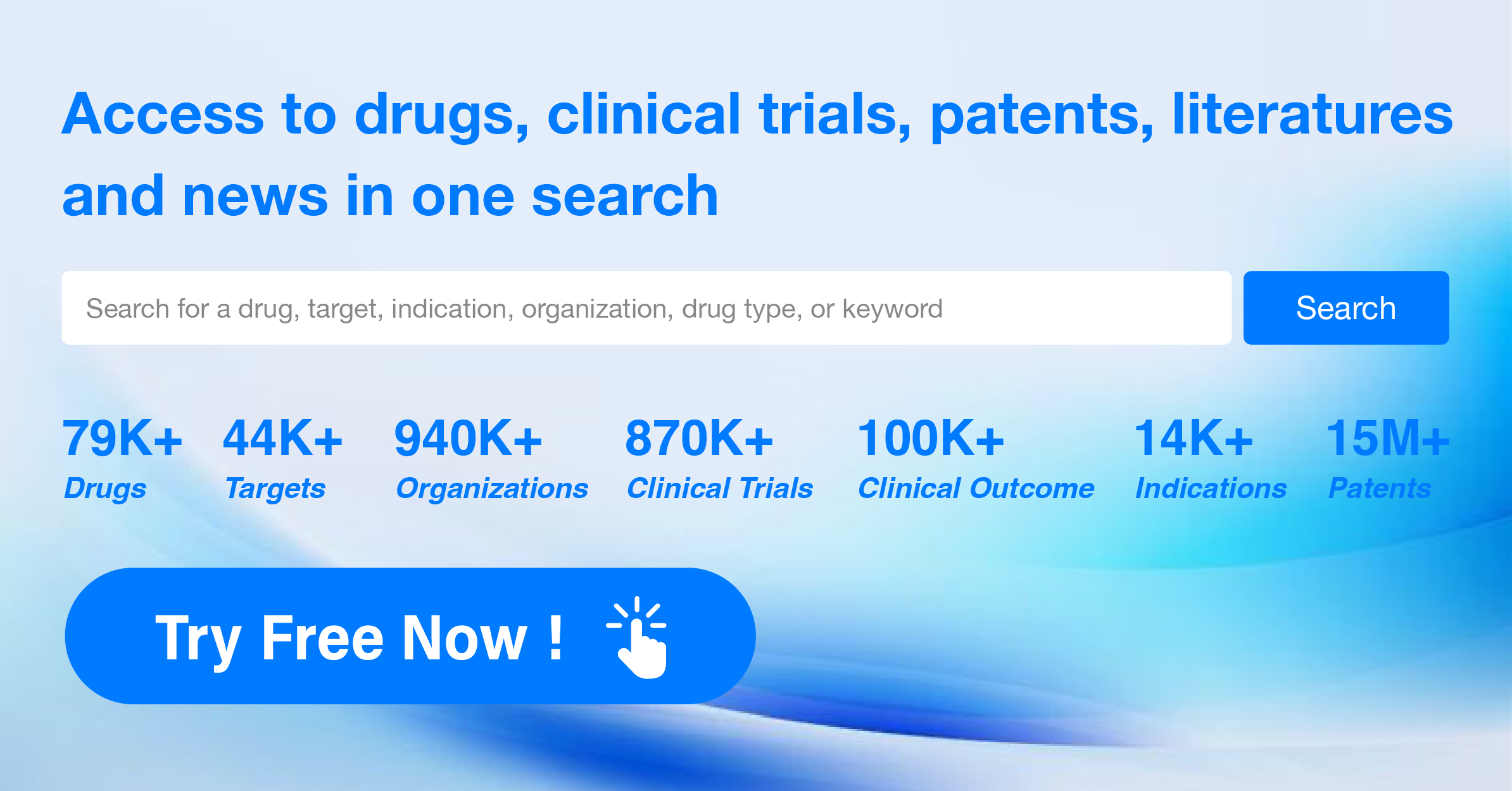Understanding PARP1 Inhibitors and Methods to Keep Abreast of Their Recent Developments
PARP1, or Poly(ADP-ribose) polymerase 1, is an essential enzyme involved in DNA repair and maintenance of genomic stability in the human body. It plays a crucial role in detecting and repairing damaged DNA strands, preventing the accumulation of mutations that can lead to various diseases, including cancer. PARP1 is particularly important in repairing single-strand DNA breaks and facilitating the recruitment of other repair proteins to the damaged sites. Additionally, PARP1 is involved in various cellular processes, such as transcription regulation and cell death pathways. Understanding the role of PARP1 has led to the development of targeted therapies, known as PARP inhibitors, for the treatment of certain cancers.
PARP1, as an important member of the family proteins that has been widely studied, plays a crucial role in a series of cellular stress processes, especially in DNA damage repair. Under genotoxic stress, PARP1 is recruited to DNA with gaps and is rapidly activated, leading to PARylation modification of various proteins, including itself, thereby initiating the DNA repair mechanism. Therefore, the key role of PARP1 in mediating DNA repair provides a theoretical basis for the development of PARP1 inhibitors to treat human malignant tumors. Especially for cancer cells with double-strand break (DSB) repair defects, such as BRCA1/2 mutant cells, they are particularly sensitive to PARP1 inhibitors based on the mechanism of “synthetic lethality”. Therefore, PARP1 has also become a hot target for cancer treatment.
The analysis of the current competitive landscape of target PARP1 reveals that multiple companies are actively involved in the development of drugs targeting PARP1, with AstraZeneca PLC, Pfizer Inc., GSK Plc, and BeiGene Ltd. leading in terms of the highest stage of development. These companies have made significant R&D progress in the development of drugs targeting PARP1. Several drugs have been approved for indications such as ovarian cancer, prostate cancer, breast cancer, and pancreatic cancer. Small molecule drugs are progressing rapidly, indicating intense competition in the market. China has shown progress in the development of drugs targeting PARP1, along with other countries such as the United States, European Union, and Norway. The future development of target PARP1 is expected to continue with advancements in R&D and the potential for more approved drugs for various indications.
How do they work?
PARP1 inhibitors are a type of medication that target an enzyme called poly (ADP-ribose) polymerase 1 (PARP1). PARP1 is involved in DNA repair processes within cells. By inhibiting PARP1, these inhibitors prevent the enzyme from repairing damaged DNA, leading to the accumulation of DNA damage and ultimately cell death.
From a biomedical perspective, PARP1 inhibitors have gained significant attention in the field of cancer treatment. They are primarily used in the management of certain types of cancers, such as ovarian and breast cancer, that have specific genetic mutations, such as BRCA1 and BRCA2 mutations. These mutations impair the DNA repair mechanisms in cancer cells, making them more reliant on PARP1 for survival. By inhibiting PARP1, these inhibitors selectively target cancer cells while sparing normal cells, resulting in the death of cancer cells.
PARP1 inhibitors can be administered orally or intravenously, depending on the specific medication. They are typically used as a targeted therapy in combination with other cancer treatments, such as chemotherapy or radiation therapy. The use of PARP1 inhibitors has shown promising results in improving progression-free survival and overall survival rates in patients with certain types of cancer.
It is important to note that PARP1 inhibitors may have side effects, including nausea, fatigue, anemia, and gastrointestinal disturbances. Additionally, not all cancer patients will benefit from PARP1 inhibitors, as their efficacy is dependent on the presence of specific genetic mutations. Therefore, genetic testing is often performed to identify patients who are most likely to respond to this type of treatment.
In summary, PARP1 inhibitors are a class of medications that target the PARP1 enzyme involved in DNA repair. They are primarily used in the treatment of certain cancers with specific genetic mutations and have shown promising results in improving patient outcomes.
List of PARP1 Inhibitors
The currently marketed PARP1 inhibitors include:
- Niraparib Tosylate/Abiraterone Acetate
- Pamiparib
- Talazoparib Tosylate
- Niraparib Tosylate
- Rucaparib Camsylate
- Olaparib
- Senaparib
- AZD-5305
- Veliparib Hydrochloride
- 2X-121
For more information, please click on the image below.
What are PARP1 inhibitors used for?
PARP1 inhibitors are used in the management of certain types of cancers, such as ovarian and breast cancer, that have specific genetic mutations, such as BRCA1 and BRCA2 mutations. For more information, please click on the image below to log in and search.
How to obtain the latest development progress of PARP1 inhibitors?
In the Synapse database, you can keep abreast of the latest research and development advances of PARP1 inhibitors anywhere and anytime, daily or weekly, through the "Set Alert" function. Click on the image below to embark on a brand new journey of drug discovery!
